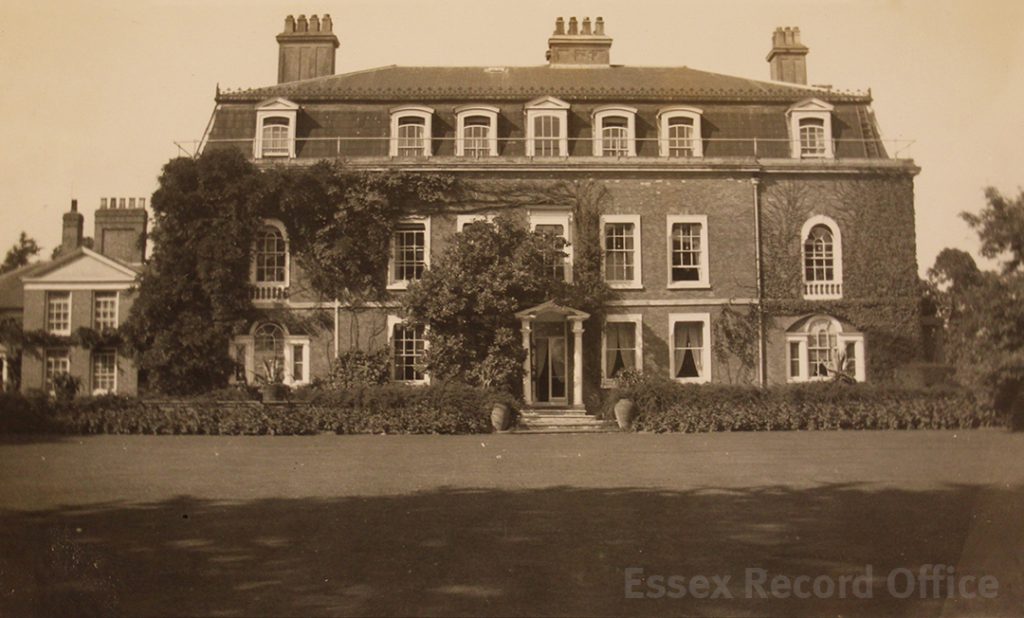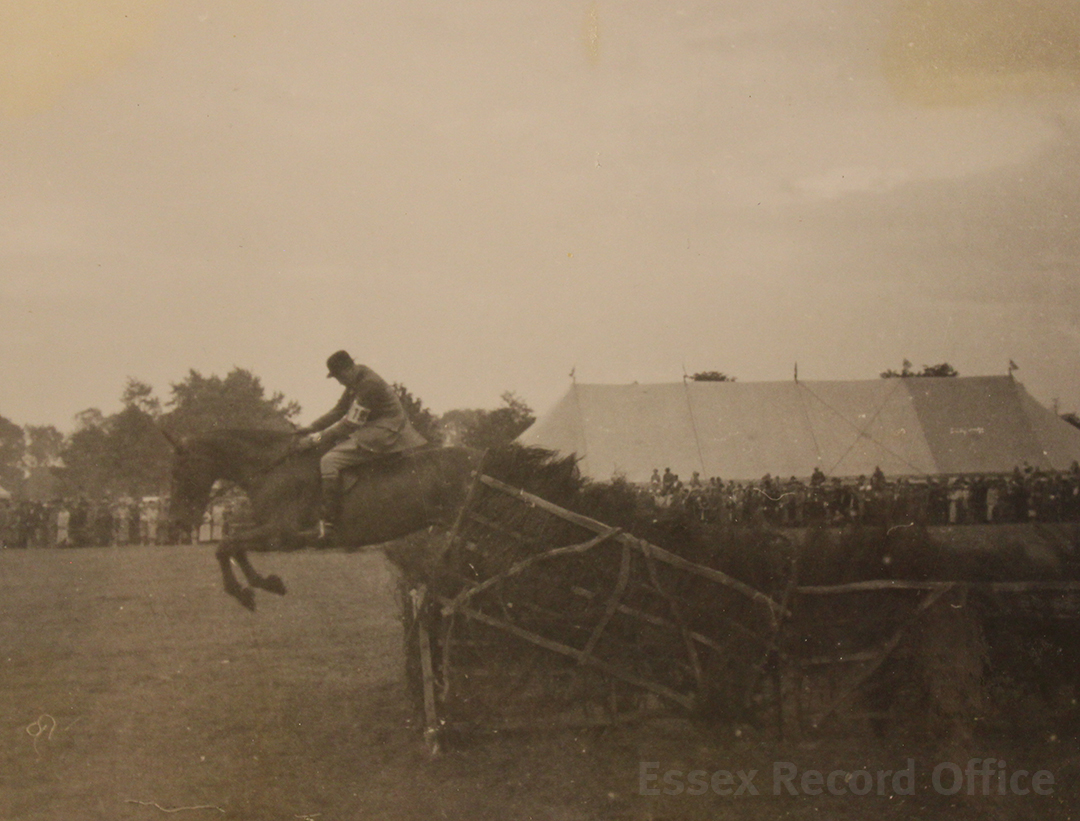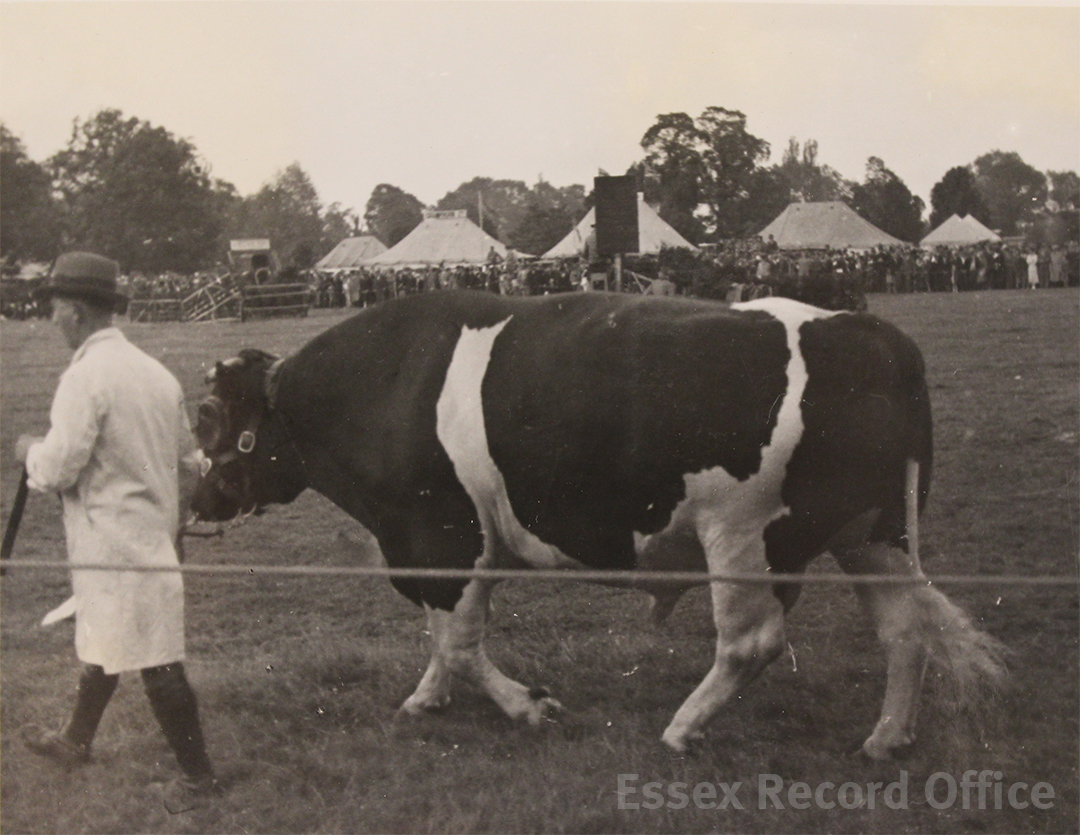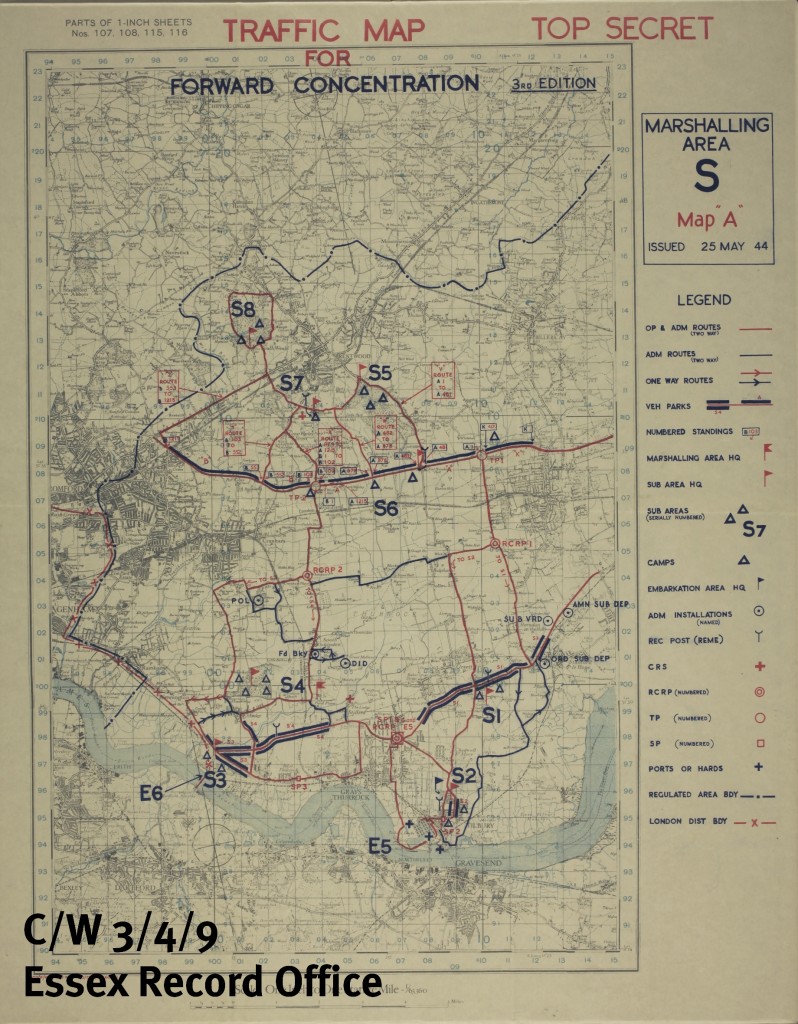This Saturday, 2 September 2017, we will be at the Orsett Show with a table in the Heritage Zone. This got us thinking about where this long running agricultural show all began.
The Orsett Show can trace its history back to ploughing matches held in the village from 1841, organised by The Orsett Agricultural Association and Labourers’ Friend Society. The competitions were held with the support of Mr Richard Baker Wingfield-Baker, the owner of Orsett Hall and President of the Society.
These events are described in local newspapers of the time. After the ploughing matches, the company would retire to the George Inn in Orsett for a prize giving and meal. The last of these events was held in October 1879, when there were 21 entries in the ploughing competition, and a ‘very good show of market garden produce, bread and needlework’ (Chelmsford Chronicle, Friday 10th October 1879). In March 1880, Wingfield-Baker was killed in a hunting accident (aged 78), and the competitions ceased.
In 1895, the new owner of Orsett Hall, Captain T.C. Douglas Whitmore and his son Francis Whitmore revived something along the lines of the previous events when they set up the Orsett and District Cottage Garden and Agricultural Society. They hosted the Orsett Show themselves in the grounds of Orsett Hall.
The Chelmsford Chronicle tells us that at the first of the new shows ‘The garden produce and exhibits were highly creditable’, but ‘In many instances it was noticeable that lessons in selecting fruit were required… The vegetables were worthy of mention. The pot plants did not call for special praise.’ Entertainment was provided by a roundabout and other amusements, and the band of the training ship Shaftesbury. In the evening, guests enjoyed dancing and fireworks.
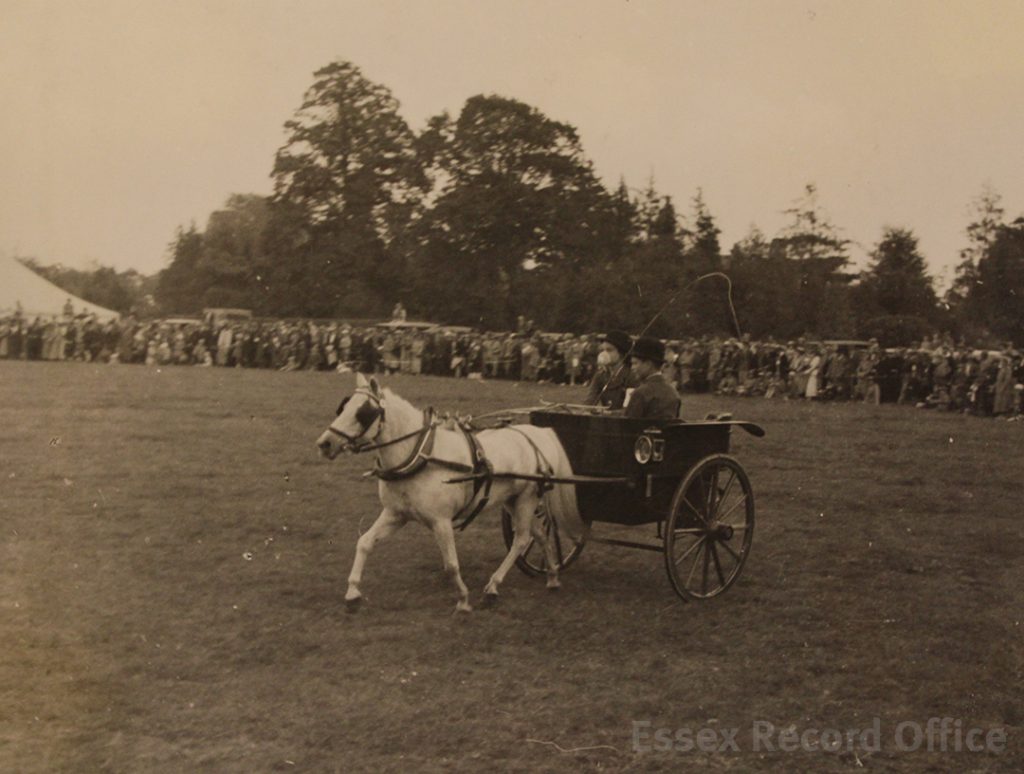
Competitors in the ring at the Orsett Show, 1935 (from Whitmore family photograph album D/DWt Z3/10)
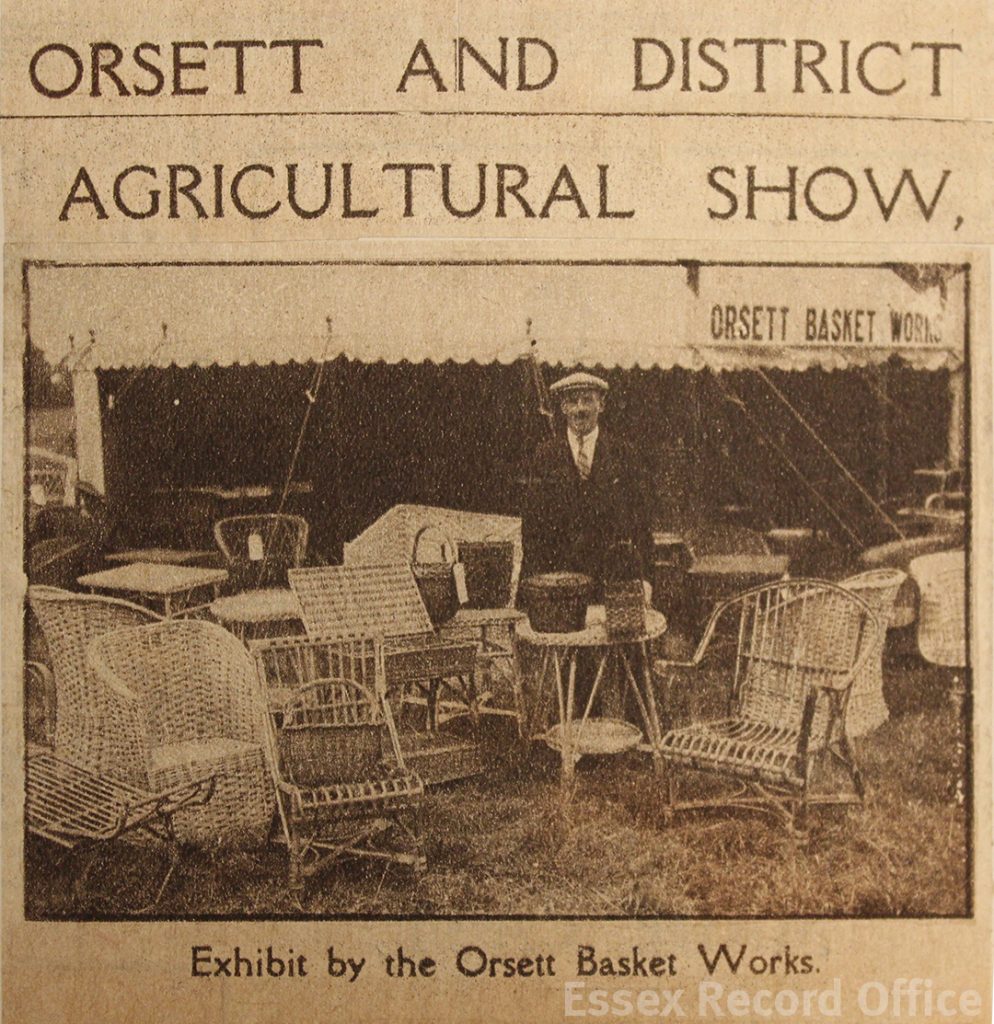
An exhibit by the Orsett Basket Works at the Orsett Show. The Orsett Basket Works was set up by Col. Whitmore after the First World War to provide employment for local men who had been wounded during the war and were not able to return to their previous employment (from Whitmore scrapbook D/DWt Z2/7)
The show continued to be held at Orsett Hall, with breaks during the World Wars. Over time new classes were introduced for vegetables, horses, cattle, and more. In 1948, Orsett Hall hosted two agricultural shows in one year, being the venue for the Essex Agricultural Show in June and the Orsett Show in September. The June event must have been a special occasion for many people as King George VI and Queen Elizabeth visited, spending the entire afternoon meeting competitors and stallholders.
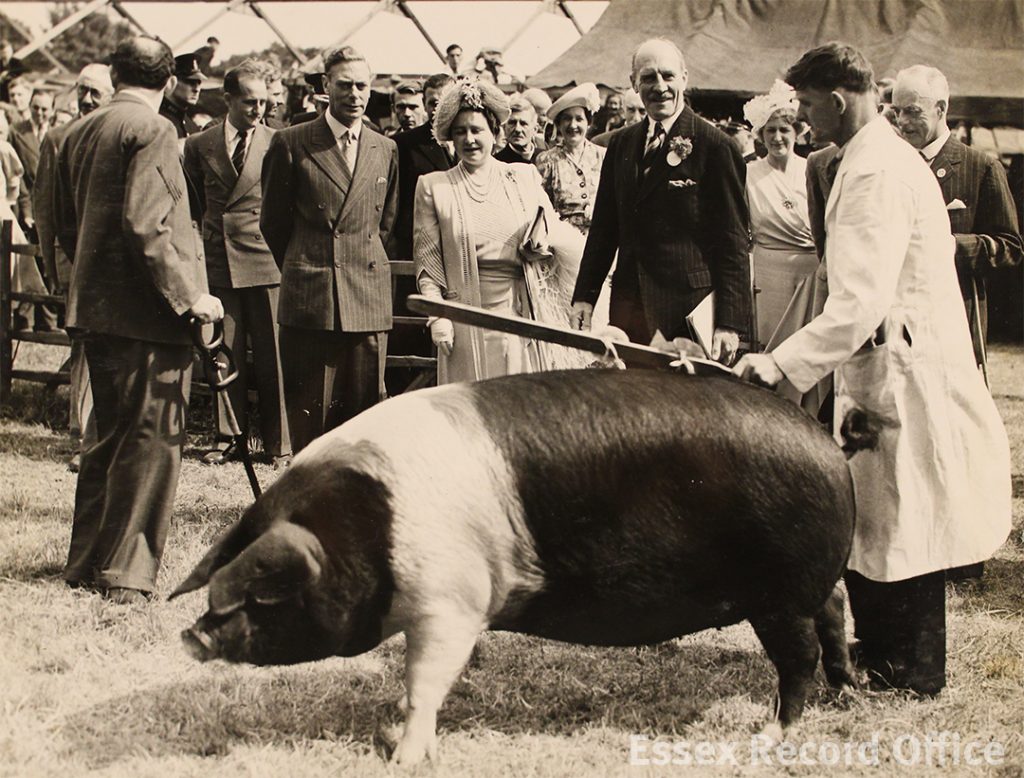
Their majesties visit the pig judging at the 1948 Essex Show held at Orsett Hall (from Whitmore family photo album D/DWt Z3/14)
In 1968, the Whitmore family sold Orsett Hall and Sir John Whitmore, the son of Sir Francis, resigned the presidency of the show, which had been with his family since 1895. A site in Rectory Road in Orsett was acquired by Orsett Show Ground Ltd to provide the show with a permanent home and it has been held there every year ever since.

